My Honest Bungee Jumping Review (Plus Adventure Photography Tips!)
This website contains affiliate links from trusted partners. If you purchase through a link on this site, I may earn a commission at no extra cost to you. As an Amazon Associate, I earn from qualifying purchases. See my Privacy Policy and Disclosure for more information.
There’s something wildly unhinged yet beautifully human about standing on the edge of a bridge and saying, “Yep… let’s yeet myself off this.”
I don’t know why hurling our bodies toward the ground makes us feel alive… but wow, it works.
Maybe it’s the adrenaline. Maybe it’s the bragging rights. Maybe it’s the moment you realize that fear and freedom can exist in the same heartbeat.
Whatever the reason, bungee jumping has earned its spot on every adventure-lover’s bucket list, especially if you’re the kind of person who packs a camera right alongside your courage (hi, it’s me).
And because this jump wasn’t just a thrill but also a full-blown adventure photography moment, this guide goes beyond my honest experience.
I’m breaking down everything you need to know before you take the leap, plus how to capture the story, emotion, and chaos of the jump so your photos feel just as wild as the fall.
This bungee jumping guide isn’t just going to talk about my experience – I want to make sure I cover everything you need to know before you leap…literally.
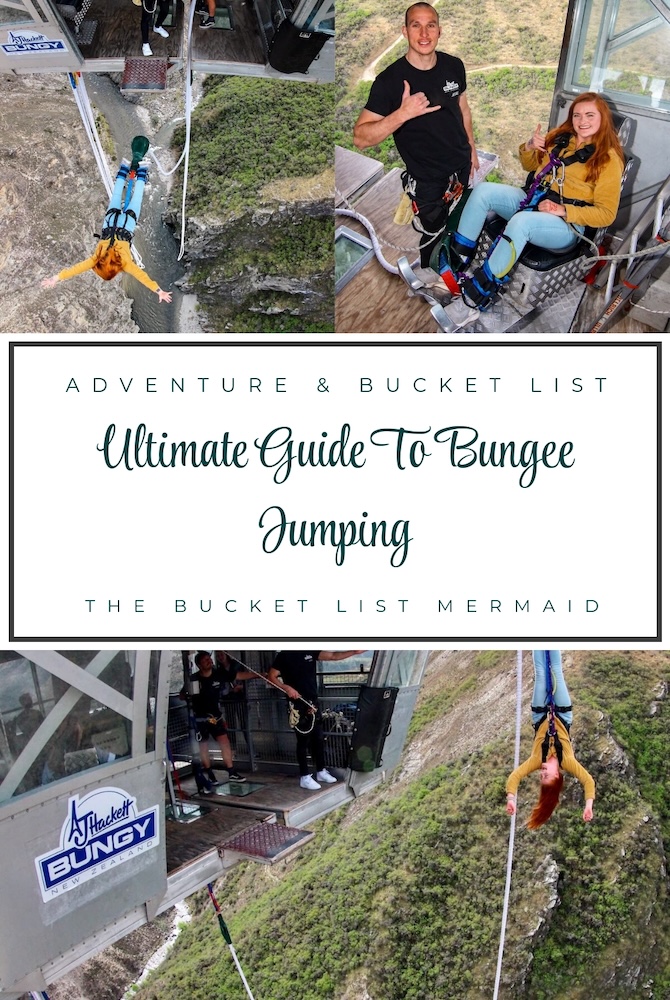
Key Takeaways
- Bungee jumping is a bucket list experience that offers a once-in-a-lifetime rush and a chance to conquer your fears!
- Mental preparation is essential. Conquer your fear, stay calm, and trust the process to make the most of your jump.
- Choose a reputable company with trained professionals and certified equipment for peace of mind.
My Bucket List Review of Bungee Jumping
| Category | Adventure |
| Who Needs to Add This to Their Bucket List? | Adrenaline junkies who love free-falling. |
| Best Time to Go | December to March |
| Traveling Difficulty | Easy |
| Physical Difficulty | Easy |
| Popularity Rating | 5/10 |
| Group/Tour Required | Yes, please don’t do this by yourself. |
| Budget | $$$ |
| Wheelchair Accessible | No |
| Where I Went Bungee Jumping | AJ Hackett |
| Where to Stay | Heart of Queenstown |
If you need more information about the categories of this table, please check out the Bucket List Reviews guide.
Watch the YouTube Video
Listen to the podcast
What is Bungee Jumping?
Bungee jumping is an extreme sport that involves leaping from a high platform—such as a bridge, crane, or cliff—while attached to a strong, elastic bungee cord.
As the jumper free falls, the cord stretches and then recoils, creating a series of thrilling bounces before safely lowering them to the ground or a retrieval point.
The sensation is a mix of adrenaline-pumping speed, weightlessness, and pure exhilaration, making it a must-try for adventure seekers.
Bungee or Bungy?
The terms “bungee” and “bungy” both refer to the same adrenaline-fueled activity, but the spelling difference is largely regional and historical.
- Bungee is the more common spelling, especially in the United States, Canada, and the UK. It’s derived from the British slang word bungy, which originally referred to something elastic or springy.
- Bungy is the preferred spelling in New Zealand, popularized by A.J. Hackett, the pioneer of commercial bungee jumping. When Hackett launched his first bungy operation in Queenstown in the 1980s, he chose this spelling, and it has since become the standard in New Zealand and parts of Australia.
Both spellings are correct, and they refer to the same heart-racing activity—so whether you’re bungee jumping off a bridge in the U.S. or taking a bungy leap in New Zealand, the thrill remains the same!
History of Bungee Jumping
Early Bungee Jumping
Bungee jumping traces its origins back to an ancient ritual from the South Pacific.
The Naghol (Land Diving) tradition of the Pentecost Island, Vanuatu islands involved young men leaping from tall wooden towers with vines tied to their ankles as a rite of passage to prove their bravery.
The First Bungee Jump
Fast forward to 1979, a group of daredevils from the Oxford University Dangerous Sports Club in England took inspiration from this ritual.
Led by David Kirke and Simon Keeling, they conducted the first modern bungee jump off the Clifton Suspension Bridge in Bristol, England, using makeshift elastic cords.
They were promptly arrested but had sparked the birth of a new extreme sport.
Modern Bungee Jumping
The real commercial breakthrough came in the late 1980s, when A.J. Hackett, a New Zealand entrepreneur and adrenaline junkie, took bungee jumping to the next level.
In 1987, Hackett made headlines by illegally bungee jumping off the Eiffel Tower, a stunt that gained international attention.
Shortly after, he and business partner Henry van Asch opened the world’s first commercial bungee jumping operation in Queenstown, New Zealand.
So, where did I go bungee jumping? Queenstown, of course!
Today, jumpers can take the plunge from bridges, cranes, cliffs, helicopters, and even hot air balloons at destinations all over the world, proving that the thrill of the free fall never goes out of style.
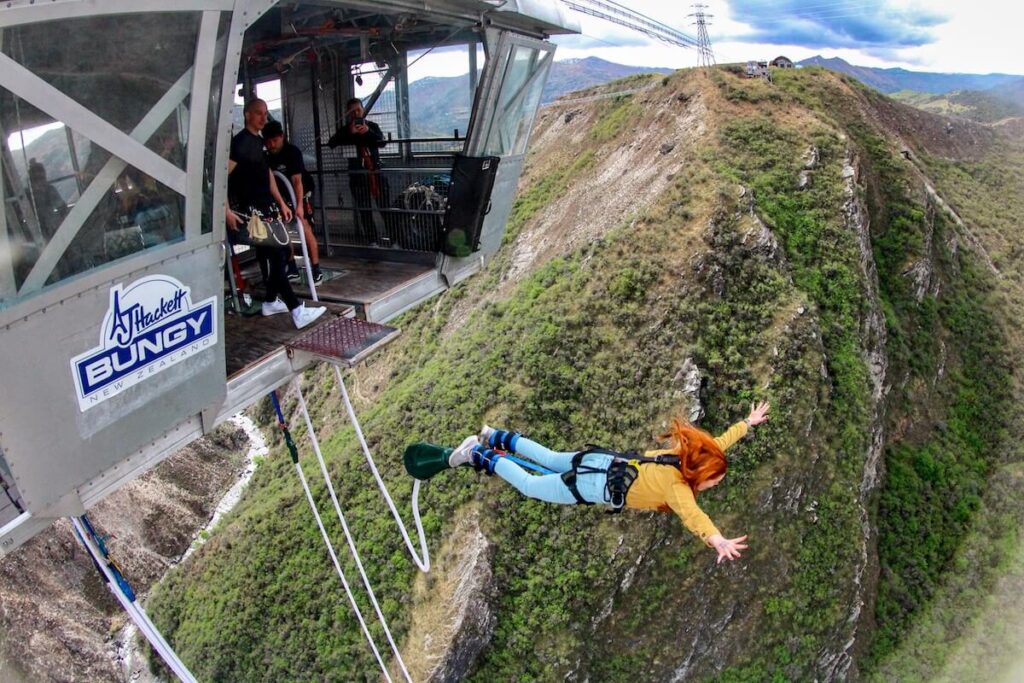
Why Do People Bungee Jump?
This is a very good question, all things considered. In fact, when I show everyone the video of me bungee jumping, the main question I get is, “Uhhh…why…?”
Don’t worry – I had to remind myself of why I was putting myself through this when I was up on that platform about to jump.
Bungee Jumping is an Adrenaline Rush Like No Other
People love bungee jumping because it delivers an unmatched adrenaline rush, a powerful cocktail of fear, excitement, and exhilaration that kicks in the moment you step off the platform.
The sheer free fall, followed by the elastic recoil, creates an intense sensation of weightlessness and pure thrill that few other activities can replicate.
It can Help You Conquer Your Fears
Beyond the adrenaline, bungee jumping is a powerful way to conquer fears. Standing on the edge, every instinct tells you not to jump—but when you take that leap, you push past mental barriers and prove to yourself that you can face the unknown.
This makes it an empowering experience that builds confidence and a sense of accomplishment.
Bungee Jumping Is an Incredible Bucket List Experience
For many, bungee jumping is also the ultimate bucket list experience. It’s one of those once-in-a-lifetime adventures that people dream of doing, whether it’s diving off a bridge over a rushing river, soaring over a canyon, or jumping from a helicopter.
The thrill, the views, and the bragging rights make it an unforgettable memory—one that adventurers proudly check off their list!
Is Bungee Jumping…?
Is Bungee Jumping Scary?
Yes. Just…yes. It’s scary as hell!
I choose to bungee jump because I’m an adventure blogger and it was on my bucket list. And I was pretty pumped to do it…until I got up on the platform.
Once I got onto the platform my brain said, “Oh, Alex. You’ve adventured a little too close to the sun this time,”
Is bungee Jumping fun?
Uhhh…yes? Maybe.
I’m going to be completely honest – I’m not sure I would categorize that as “fun”.
Is it fun to scare the living daylights out of you and replace every cell in your body with adrenaline? Then yes, it’s a blast!
Is Bungee Jumping Worth it?
Even though it was one of the scariest things I’ve done, I would still recommend it.
The reason that I would recommend doing this activity before you die is that once you take control of your fears yourself and take the jump (quite literally!) it can feel extremely rewarding.
After that mental and emotional victory, all you have left to do is…well…fall.
A small disclaimer (because I did say honest), I think that everyone should feel that mental victory, but this was pretty scary.
I don’t think it is for everybody and I’m not sure that I would do it over and over again.
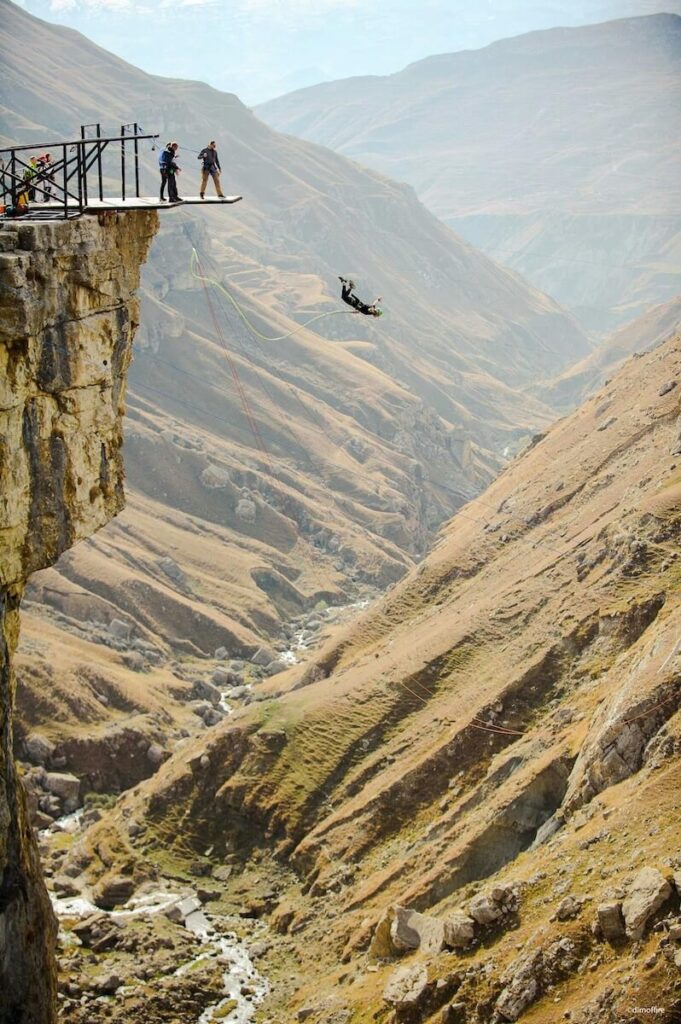
Bungee Jumping Equipment
Bungee jumping isn’t just about taking a daring leap—it’s a carefully engineered adventure designed for maximum thrill and safety.
From the elastic cord that controls your fall to the harness system that keeps you secure, every aspect of bungee jumping is meticulously planned.
1. The Elastic Cord: The Lifeline of Your Jump
The bungee cord is the most crucial part of the experience.
It’s not just a simple rope—it’s a highly specialized, multi-strand elastic cord made from natural latex or synthetic rubber.
These cords are designed to stretch and recoil safely, absorbing the force of the jump and creating that signature bouncing motion.
Key Features of a Bungee Cord:
- Durability: Cords are designed for multiple uses but are regularly tested and replaced.
- Strength: Made to withstand several times the weight of a jumper.
- Controlled Stretch: Allows a smooth freefall before slowing down and bouncing back.
Different jump locations may use single or double-cord setups, depending on the height and jump style.
2. Harnesses: How You Stay Secure
There are two main types of harnesses used in bungee jumping:
Ankle Harness (Leg Harness)
- This is the most common attachment style.
- The cord is securely fastened around your ankles, allowing for a classic head-first dive.
- Some jumpers also have a backup body harness for extra security.
Body Harness (Full-Body or Waist Harness)
- Used in some locations, especially for tandem jumps or those who prefer a more upright jumping position.
- The cord is attached to the chest or waist, allowing for a feet-first descent instead of head-first.
Bonus Tip: Many commercial bungee operators use both an ankle harness and a backup body harness for extra safety!
3. Safety Mechanisms: How Risks Are Minimized
Bungee jumping might look extreme, but it follows strict safety procedures to ensure a controlled and secure experience.
Safety Checks Before the Jump:
- Weight Measurements: Jumpers are weighed before the jump to determine the correct cord tension.
- Equipment Inspection: Cords, harnesses, and platforms are checked before each jump.
- Trained Professionals: Certified jump masters guide you through the entire process.
Backup Safety Features:
- Redundant Harness System: Most operators use both ankle and body harnesses.
- Multiple Cord Inspections: Cords are replaced after a certain number of jumps to prevent wear and tear.
- Secure Platform & Jump Conditions: Jumping is only done in favorable weather conditions.
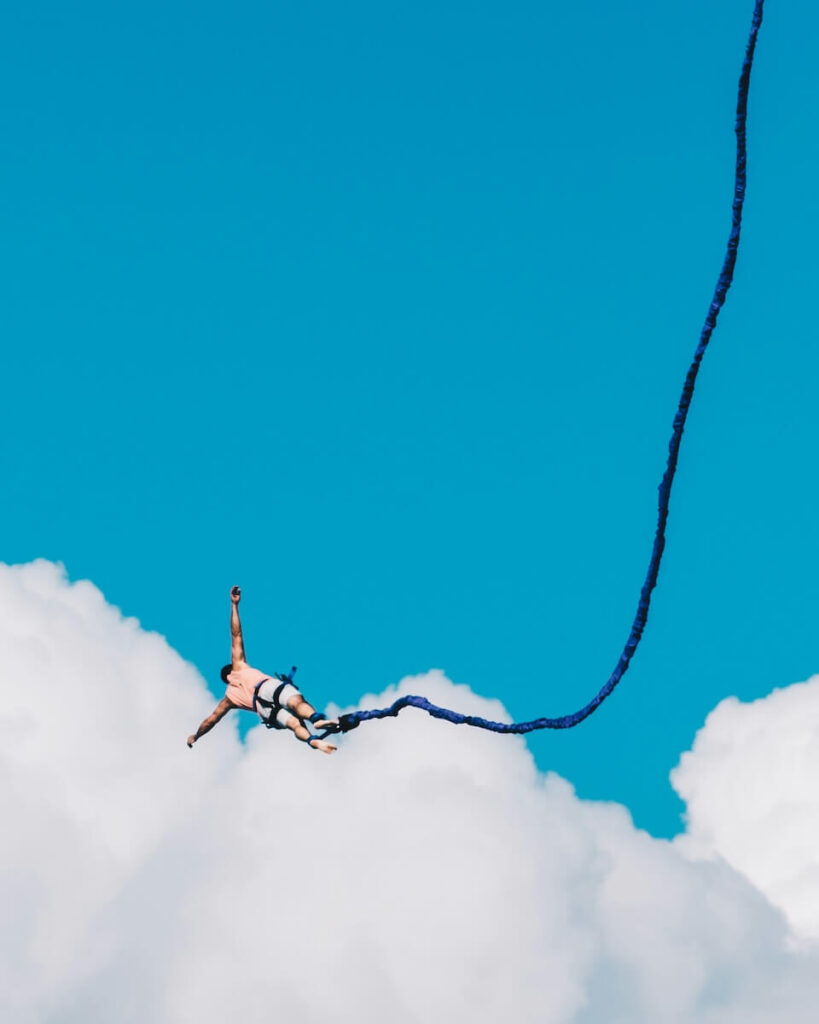
Different Types of Bungee Jumps
1. Bridge Jumps
This is the most iconic type of bungee jump—diving off a towering bridge over a river, canyon, or valley. Bridges provide a natural, scenic backdrop, and the long drop ensures a dramatic freefall.
Top Bridge Jumps:
- Bloukrans Bridge, South Africa (216m / 709ft) – One of the world’s highest.
- Verzasca Dam, Switzerland (220m / 722ft) – Famous from the James Bond film GoldenEye.
- Victoria Falls Bridge, Zambia/Zimbabwe – Jump with a view of a world wonder!
2. Crane Jumps
Crane bungee jumps take place in cities or temporary adventure parks.
A crane lifts a jump platform high above the ground, allowing jumpers to experience the freefall in an urban setting.
These jumps are often mobile, making them accessible in locations where natural jumps aren’t possible.
Why Try a Crane Jump?
- Perfect for festivals, pop-up adventure parks, or urban settings.
- Often available for night jumps with city lights in the background.
3. Platform Jumps
Platform bungee jumps are built on cliffs, towers, or purpose-built structures. These offer a controlled environment with impressive heights.
Famous Platform Jumps:
- Macau Tower, China (233m / 764ft) – The highest commercial bungee jump in the world.
- Nevis Bungy, New Zealand (134m / 440ft) – A must-try for thrill-seekers in NZ.
4. Helicopter Jumps
One of the most extreme bungee experiences, helicopter jumps involve jumping from a moving helicopter mid-air!
Unlike traditional jumps where you leap from a fixed point, here you experience the rush of freefalling with no solid ground beneath you.
Will Smith bungee jumped out out of a helicopter for his 50th birthday over the Grand Canyon!
What Makes It Special?
- No fixed jumping platform, just open air below.
- Can be combined with water landings for extra excitement.
- Exclusive and only available in select adventure destinations.
5. Hot Air Balloon Jumps
Imagine floating high above the ground in a hot air balloon… and then leaping off! Unlike fixed jumps, balloon jumps provide a unique drop, making the freefall experience feel even more surreal.
Why Try a Hot Air Balloon Jump?
- No solid platform, just the open sky.
- A slower, more controlled fall before the cord kicks in.
- Often done at sunrise or sunset for breathtaking views.
6. Water Touch Jumps
A fun twist on bungee jumping—jumpers experience a controlled descent that dips them into water at the lowest point of the bounce!
Where to Try It?
- Queenstown, New Zealand (AJ Hackett Bungy Kawarau Bridge) – Famous for water-touch jumps!
What Is Free Fall in Bungee Jumping?
Free fall in bungee jumping refers to the initial phase of the jump, where the jumper is completely unrestrained and accelerates toward the ground due to gravity.
It happens right after you take the leap off the platform before the bungee cord begins to stretch and slow you down.
Here’s what happens during free fall:
- Moment of Release: When you jump off the platform, your body is not yet slowed down by the bungee cord, so you experience the sensation of falling at increasing speed.
- Acceleration: During bungee jumping, you will accelerate close to the force of gravity (around 9.8 m/s²). Because of this, you quickly gain speed, usually reaching around 50-60 mph (80-100 km/h), depending on the height of the jump.
- Weightlessness: The initial sensation is similar to flying or skydiving, where your stomach might drop and you feel like you’re weightless. It’s a moment of intense adrenaline rush.
Obviously, the higher the bungee, the longer the free fall.
Average Free Fall Time
Most jumps have about 2.5 and 4.5 seconds of free fall, with the more intense jumps going up to 6 seconds.
I know, I know. This doesn’t seem like a lot of time. But, trust me! Time slows.
My jump was a whooping 8.5 seconds of free fall. And let me tell you – that was the longest 8.5 seconds of my life.
Pay attention to how much free fall time you are getting with your jump. Also, be realistic with yourself. You might only be able to handle 3 seconds – and that’s okay!
Adventure Photography Tips for Bungee Jumping
Bungee jumping isn’t just a thrill. It’s a story. And as adventure photographers, our job is to capture every ounce of fear, excitement, chaos, and “WHY AM I DOING THIS AGAIN?” energy.
Here are the best ways to photograph the jump so the images feel as intense as the experience.
Read More – How to Become an Adventure Photographer
Note that I would NOT recommend taking a camera on a jump. Give it to a friend with these settings.
Honestly, I would recommend getting the photo package and having the company taking pictures for your and/or your friend.
However, if you want to tackle some bungee jumping photography… here’s how to do it!
Best Camera Settings for Bungee Jumping
Freeze the moment
- Shutter Speed: 1/1000s or faster if you want tack-sharp freefall frames
- Want motion drama? Drop to 1/100–1/250s for a subtle blur
- Burst Mode: Always. Your jumper is moving fast
- AF-C (Continuous Autofocus): Tracks the movement so you stay locked in
- ISO: Start around 100–400 outdoors; raise only as needed
Lens Options
- Wide Angle (20–24mm): Best for capturing the massive height + sweeping scenery
- Telephoto (70–200mm): Perfect from the ground to compress distance and make the jump look even more dramatic
Read More – Best Lenses for Travel Photography | Best Travel Photography Hashtags
📸 Pro tip: Start wide for the “OMG they’re falling off a bridge” energy, then zoom in for emotion.
Lighting Tips for the Perfect Shot
Adventure lighting is unpredictable, but that’s half the fun.
- Backlight the jumper for magical sun glow around their hair + rope
- Cloudy days = soft, even tones and happy skin
- Direct sunlight gives you bold shadows and epic silhouette opportunities
- Golden hour makes everything more cinematic (especially the jump platform)
If you want an ultra-dramatic vibe → shoot slightly underexposed and brighten in editing.
Read My Full Editing Guide or Snag the EBook
If Someone Else Is Taking the Photos for You
Trusting a friend, partner, or random fellow jumper with your camera is a whole leap of faith on its own. Make it easy for them:
- Set the camera up first (manual settings + autofocus tracking)
- Turn on eye/face detection so they don’t miss the moment
- Give them a short shot list:
- You standing on the edge
- The actual drop
- The bounce back
- The “I survived” face afterward
- Tell them to shoot early and keep shooting late
The launch and the rebound are the most emotional parts.
📸 Bonus tip: Stick to burst mode so they can’t mess it up.
Emotional & Storytelling Shots to Capture
These are the frames that make your jump look like a cinematic moment, not just a quick fall.
- The “before” face (equal parts fear and “this is fine”)
- The platform edge with toes hanging over
- The exact freefall moment when gravity steals the show
- The upside-down bounce — hilarious every time
- The post-jump adrenaline grin when survival kicks in
- Context shots: the bridge, the canyon, the river, the height
These are the photos that turn your bungee jump into a story.
How to Get the Shot Safely
Adventure photography is all fun and games until a gust of wind tries to yeet your camera into a canyon.
Getting epic bungee jumping photos is absolutely doable as long as safety comes first.
Here’s how to protect yourself, your gear, and everyone around you:
Stay Behind Railings (Always)
Bungee platforms have specific zones for a reason.
Lean over safely, use wide angles to exaggerate height, but never put your body where it doesn’t belong.
The jump is dangerous enough and your camera doesn’t need to get in on the action too.
Check the Wind Before You Shoot
Strong wind can:
- Shake your camera
- Whip hair/clothing in unpredictable directions
- Affect the jumper’s movement
- Send gear flying
If it’s gusty, keep your strap on, tighten your grip, and choose angles that reduce wind exposure.
I have a ton of gear that I love to use linked in my Amazon Storefront.
Read the Operators’ Cues
These folks are the real MVPs of jump safety.
If they tell you to step back, stop photographing for a moment, or shift positions, listen.
Their job is to keep the jumper safe and you don’t want to disrupt their workflow.
Secure Your Gear
- Use a neck strap or wrist strap
- Keep extra lenses zipped away
- Clip anything loose to your belt
- Don’t change lenses near edges (hello, gravity)
Basically: don’t let your gear become the next thing that jumps.
Don’t Hold Your Camera During Your Own Jump
Unless you’re wearing a GoPro or using an approved mount, keep your hands free.
Jumping with a DSLR = chaos + broken gear + sad photographer.
If you want POV shots, ask the staff about what they allow. Every operator has different rules.
Personally, I like using the Insta360 over the GoPro, but it is personal preference.
How to Pick the Best Bungee Jump Location and Company
Choose Where You Want to Bungee Jump
When choosing a bungee jump location, I would consider the following:
Scenic Views: The location’s surroundings can make your experience even more memorable.
Some of the world’s most breathtaking bungee jump sites are surrounded by mountain backdrops, lush forests, or canyon views.
Jump Height: The height of the jump affects the intensity of the free fall and the level of adrenaline. If you’re a first-timer, a mid-range jump (around 130–150 feet) is a great place to start.
Type of Jump: As mentioned before, figure out what you want to jump off of – Bridge? Platform? Helicopter?
Accessibility & Location: Choose a destination that is convenient to reach, especially if you’re traveling. Consider whether the site is nearby and easy to access with travel routes, accommodation, and the availability of other attractions for additional fun.
How To Choose The Right Bungee Jumping Company
Once you’ve decided on a location, it’s time to choose the right bungee jumping company. Here’s how to make sure you’re jumping with the best:
1. Reputation & Safety Standards
The safety record of the company should be your first priority. Look for:
- Certified equipment: The company should use high-quality bungee cords and secure harness systems that meet international safety standards.
- Trained professionals: Ensure that the instructors are highly trained and experienced. They should also perform rigorous safety checks before every jump.
- Customer Reviews: Read reviews from past jumpers to gauge the company’s reputation for safety, professionalism, and overall experience.
2. Safety & Backup Systems
Reliable companies have multiple backup safety measures in place. Ask about:
- Double checks: Staff should conduct at least two rounds of equipment inspection.
- Backup cords and recovery systems in place to ensure your safety throughout the experience.
- Clear emergency protocols: Ensure they have solid plans for any unexpected issues.
3. Customer Service and Experience
Bungee jumping should be fun and stress-free. A reputable company will provide a:
- Friendly, welcoming environment: The staff should make you feel at ease, whether you’re a seasoned jumper or a first-timer.
- Clear instructions: You should receive detailed briefings about the jump, including body positioning, how to jump, and what to expect.
- Photos and Videos: Many companies offer photo/video packages to capture your moment. Ensure they have high-quality equipment to document the experience.
4. Price and Package Deals
While bungee jumping can be a bit of a splurge, don’t let cost be the only factor. A reliable company may charge a little more, but it ensures a safe and unforgettable experience. Consider:
- Package deals that include photos or videos, especially if you’re looking to preserve the memory.
- Group discounts or special deals, especially during off-peak seasons.
5. Availability of Extra Services
Look for companies that offer a little extra to enhance your experience, such as:
- Guided tours of the location.
- After-jump celebrations or refreshments to share your thrill with fellow jumpers.
Booking in Advance vs. Walk-In Jumps
Booking in advance to guarantee your spot, especially at popular locations or during peak seasons.
Walk-in jumps are possible, but availability is not always guaranteed.
Booking ahead ensures you won’t miss out and can often help you secure a discount or special offer.
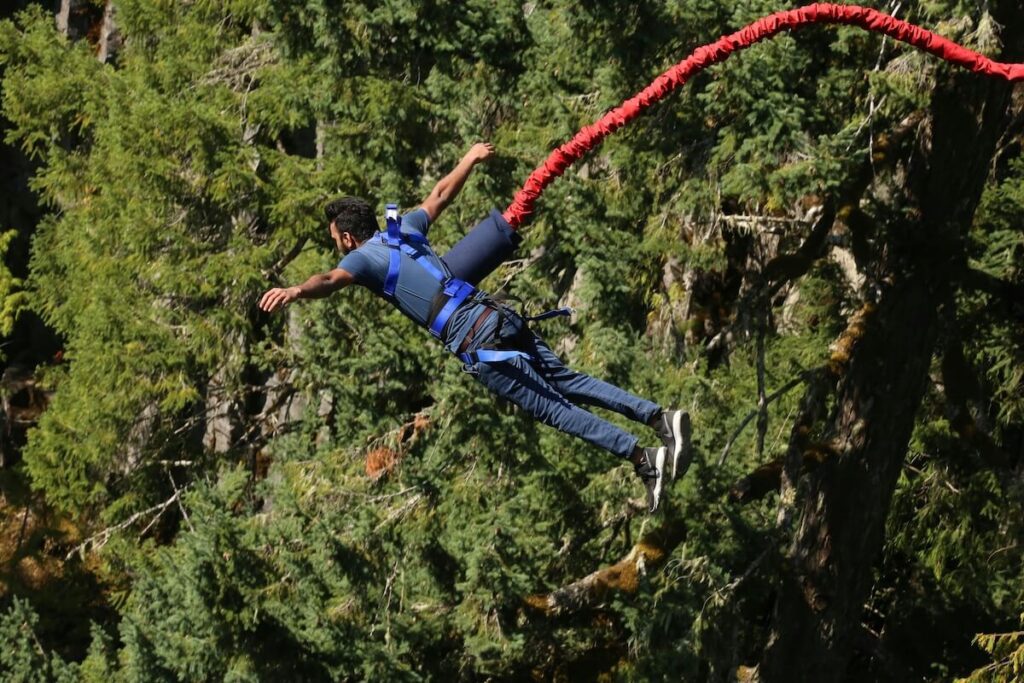
How Much Does Bungee Jumping Cost?
Bungee jumping prices vary depending on location, height, and type of jump, but here’s what you can expect:
Average Cost of a Bungee Jump
- Standard jumps (bridges, cranes, platforms): $50 – $200
- Extreme jumps (helicopter, hot air balloon, special locations): $200 – $500+
- VIP or tandem jumps: Additional fees may apply
Factors That Affect the Price
- Location: Jumps in iconic or remote locations tend to be more expensive.
- Jump Height: The higher the jump, the more you may pay.
- Extras: Want photos, videos, or a second jump? Expect add-ons to cost $20 – $100+.
- Peak vs. Off-Peak Pricing: Some operators offer discounts during weekdays or off-season.
How to Get the Best Deal on Bungee Jumping
- Book in advance: Some places offer early-bird or group discounts.
- Look for package deals: Some adventure parks bundle bungee jumping with other activities.
- Check for local discounts: Some locations offer lower rates for residents or students.
Best Bungee Jumping Experiences
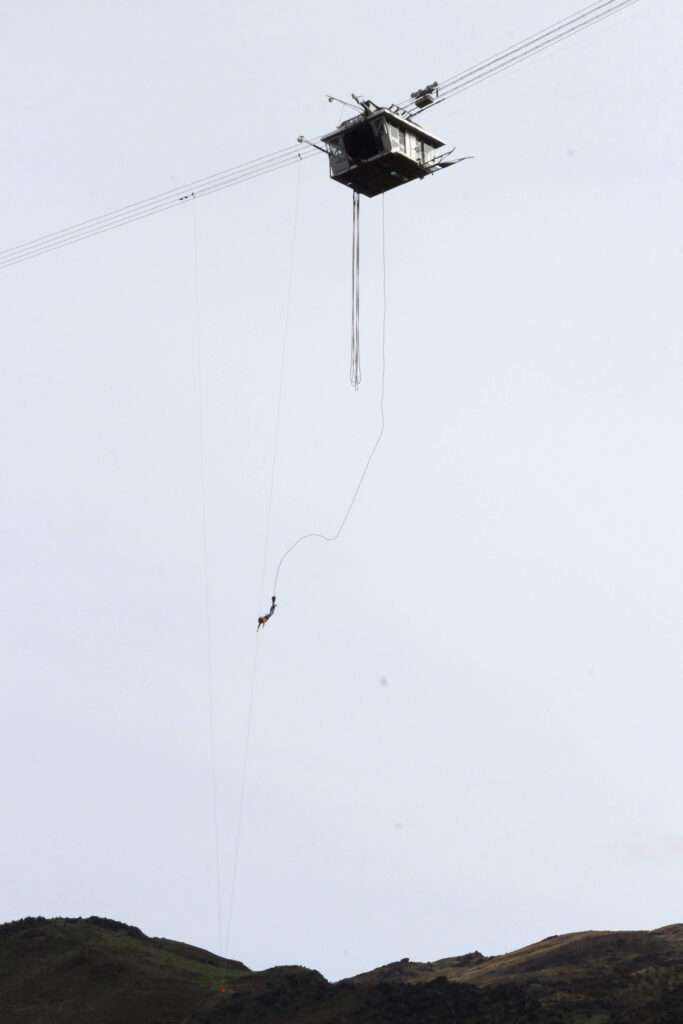
Is bungee Jumping Safe?
Now let’s tackle the question that is on everybody’s mind…is bungee jumping actually safe?
Ironically, it’s safer than you think.
Bungee jumping might look like an extreme, daredevil stunt, but it’s actually a highly regulated adventure sport with strict safety measures in place.
Thanks to rigorous equipment checks, professional oversight, and well-engineered systems, bungee jumping has an excellent safety record compared to many other extreme activities.
Let’s dive into the details of how bungee operators keep jumpers safe, the risks involved, and who should (or shouldn’t) take the plunge.
Safety Measures of Bungee Jumping
1. Equipment Checks: The Backbone of Safety
Before every jump, all equipment is thoroughly inspected to ensure it meets strict safety standards. This includes:
- Bungee Cords: Regularly tested for elasticity and wear, with strict replacement schedules.
- Harnesses: Double-checked for secure fastening and proper weight distribution.
- Anchoring System: Rigging and platform structures are reinforced and inspected frequently.
Fun Fact: Many operators use redundant safety systems, meaning there are backup cords and attachments in place to minimize any risk.
2. Trained Professionals: Your Jump Masters Have You Covered
Every commercial bungee jump is supervised by trained and certified professionals who guide you through the process. They ensure:
- Proper Weight Calculation: Cords are selected based on your weight to ensure the right tension and rebound.
- Safety Briefing: Jumpers receive step-by-step instructions to minimize risk.
- Final Gear Inspection: Before takeoff, staff double-checks all connections.
These professionals won’t let you jump unless everything is 100% secure.
3. Backup Systems: Extra Layers of Protection
To enhance safety, most bungee jump operators implement multiple fail-safes, including:
- Double Harness System: Many locations use both an ankle and body harness for redundancy.
- Multiple Cord Attachments: Some operators use twin cords as a backup.
- Video Monitoring: Some companies record jumps to review safety procedures.
All of these measures work together to ensure a controlled and safe experience.
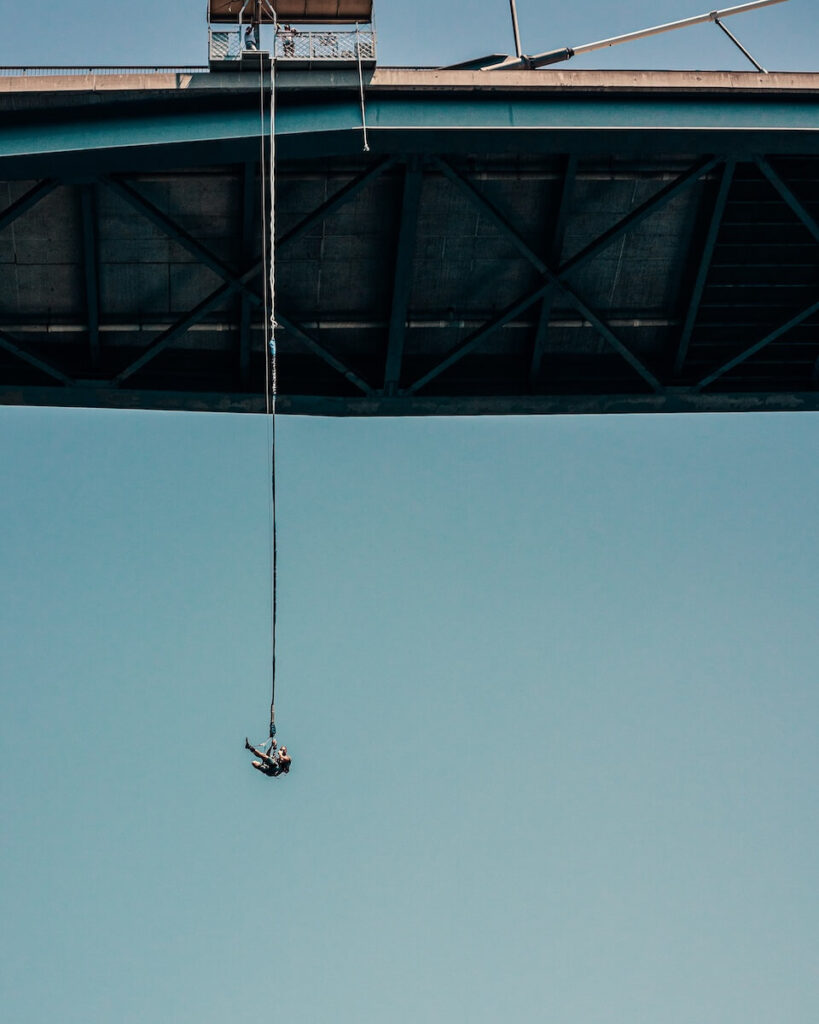
Common Risks & How They’re Mitigated
Like any extreme sport, bungee jumping does come with some risks. However, professional operators have designed ways to reduce these dangers significantly.
1. Cord or Equipment Failure (Extremely Rare)
✅ Mitigation: Regular testing, strict retirement schedules, and high-quality materials prevent failure.
2. Improper Harness Attachment
✅ Mitigation: Jump masters perform a multi-step harness check before every jump.
3. Jumping in Unsafe Conditions (Weather or Location)
✅ Mitigation: Bungee operators cancel jumps in high winds, lightning, or unsafe conditions.
4. Potential for Minor Injuries (Bruises, Whiplash, or Rope Burn)
✅ Mitigation: Proper body positioning, gradual deceleration, and correct cord tension help minimize discomfort.
How Safe Is Bungee Jumping Compared to Other Adventure Sports?
Worried about safety? Let’s put things into perspective. Here’s how bungee jumping compares to other high-adrenaline activities:
| Activity | Estimated Risk of Fatality |
|---|---|
| Bungee Jumping | 1 in 500,000 jumps |
| Skydiving | 1 in 200,000 jumps |
| Scuba Diving | 1 in 34,000 dives |
| Driving a Car | 1 in 101 per year |
| Mountaineering (Everest) | 1 in 60 climbers |
These numbers are rounded and vary by source. This is what I could find was the overall average.
Bungee jumping is statistically safer than skydiving, scuba diving, and even driving a car!
I warn you though…just because there is less risk doesn’t mean it’s not “poop your pants” kind of terrifying.
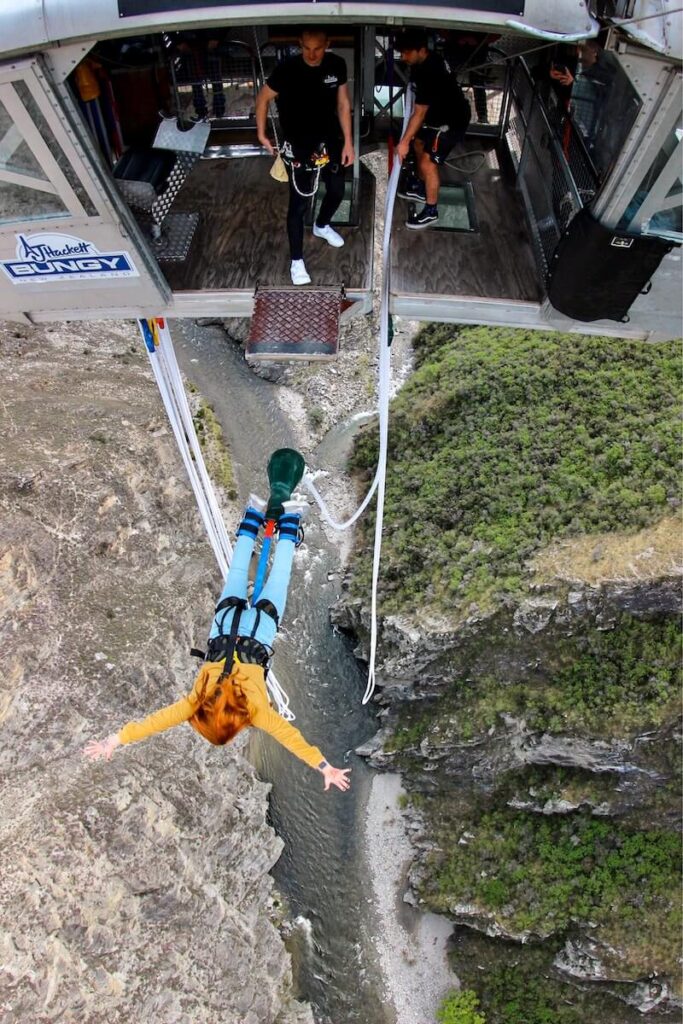
Who Should & Shouldn’t Bungee Jump?
While bungee jumping is designed to be safe for most people, there are certain health conditions and situations where it’s not recommended.
✅ You CAN Bungee Jump If:
- You’re in good overall health with no serious medical conditions.
- You meet the minimum and maximum weight requirements (varies by operator).
- You’re mentally prepared for the thrill!
❌ You Should AVOID Bungee Jumping If:
- Heart Conditions: The sudden drop can put stress on your cardiovascular system.
- High Blood Pressure: The adrenaline rush could cause an unsafe spike.
- Back or Neck Problems: The rebound effect may strain existing injuries.
- Pregnancy: Not worth the risk—wait until after delivery!
- Recent Surgeries or Injuries: Healing tissues and joints could be affected by the jump’s forces.
- Epilepsy or Severe Anxiety Disorders: The sudden rush could trigger an episode.
Age & Weight Limits
🔹 Minimum Age: Typically 10-14 years old, depending on the location (some require parental consent for minors).
⚖️ Weight Limits: Usually between 80 lbs (36 kg) and 300 lbs (136 kg), but limits vary by jump site and equipment used.
If you’re unsure, consult a doctor before taking the leap!
I would also consult your doctor if you have any neck or back problems because it does whip you around a little bit.
I was actually quite worried about this because you watch videos and it really looks like their body gets jerked around.
Luckily, when I jumped, this was the last thing on my mind and I didn’t even notice.
Best Time to Go Bungee Jumping
The best time for bungee jumping is typically during mild weather conditions, avoiding extreme temperatures or storms. In general:
- Spring and fall are ideal for clear skies and moderate temperatures.
- Summer is popular but can get crowded at tourist spots, so plan early.
- Avoid rainy seasons, as slippery platforms and poor visibility can affect safety.
How to Prepare for Your First Bungee Jump: Everything You Need to Know
So, you’ve decided to take the plunge—literally! Bungee jumping is a thrilling experience, and you probably have a mix of excitement and nerves (totally normal!).
The key to making your jump as smooth and enjoyable as possible is proper preparation—both mentally and physically.
Mental Preparation: Conquering Fear & Staying Calm
Let’s be real—standing on the edge of a platform, looking down, and knowing you’re about to jump goes against every natural survival instinct.
It takes a mentally strong person to override these instinctual red flags and take the ultimate leap. I would not consider myself a person who is afraid of heights, but it even made my stomach a little queasy!
After taking the ultimate leap, here is what I recommend.
1. Remind Yourself: It’s Safe!
Bungee jumping is an extremely controlled activity with professional oversight and rigorous safety measures. You’re in good hands!
2. Focus on the Excitement, Not the Fear
Instead of thinking about how scary the drop looks, shift your mindset to how epic this experience will be. You’ll feel like a superhero flying through the air!
3. Trust the Process
Your jump instructors are professionals who have guided hundreds—if not thousands—of people just like you.
Listen to them, trust their expertise, and follow their instructions.
4. Breathe & Visualize
Take slow, deep breaths. Picture yourself standing tall, taking the leap confidently, and enjoying the rush. Mind over matter!
5. Commit & Jump!
Hesitation is your worst enemy. The longer you wait, the harder it gets. When the countdown starts—just go for it!
What to Wear Bunging Jumping
Your outfit can affect your comfort and safety, so choose wisely!
✅ Comfortable Clothing: Wear snug but flexible clothes that won’t interfere with your harness. Athletic wear or fitted jeans work great.
✅ Secure, Closed-Toe Shoes: Sneakers or athletic shoes with laces tightly secured are best. Avoid sandals, flip-flops, or anything that could fall off mid-air.
✅ No Loose Accessories: Take off watches, necklaces, rings, sunglasses, and hats cause they’ll fly off!
✅ Hair Considerations: If you have long hair, tie it back to avoid it whipping into your face during the jump.
What NOT to Wear:
❌ Skirts or dresses (harnesses fit best over pants or shorts)
❌ Baggy or oversized clothing (could get tangled)
❌ Scarves or loose hoodies (can obstruct your view)
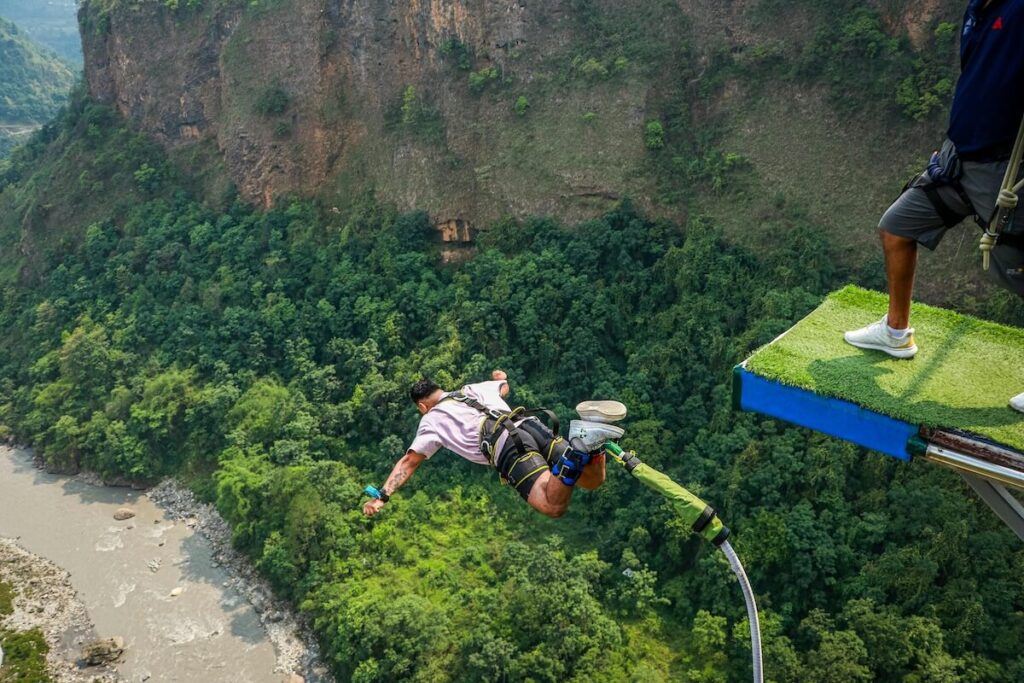
What to Expect on the Day of Your Jump
Getting to the Jump site
It’s important to coordinate how you are getting to the jump site.
For me, I had to take a bus and was picked up in Queenstown.
We stopped by Kawarau (the baby scenic jump of AJ Hackett) just long enough for me to think, “Hold up. This was an option?!”
The majority of the folks hopped off and only about 6 of us continued to Kawarau’s nasty older brother: Nevis!
Check-In & Paperwork
When you arrive at the bungee site, you’ll check in, fill out a waiver, and provide your weight so the correct bungee cord can be selected for you.
Safety Briefing & Instructions
A professional instructor will walk you through:
- How the jump works
- The correct body posture (arms out, head up, slight knee bend)
- What to expect during the fall and rebound
- How to signal if something feels wrong (though rare, it’s good to know!).
When I jumped Nevis, they also briefed me on how to pull a cord to get myself upright when they reeled me in.
I, of course, tried my hardest and couldn’t grab the cord. So, they reeled me in upside down like a fish (which is ironic because I am an adventuring mermaid).
Harness & Equipment Fitting
You’ll be fitted with either an ankle harness, a body harness, or both, depending on the location.
Pre-Jump Safety Checks & Instructions
Before you even step onto the jumping platform, the staff will conduct thorough safety checks to ensure everything is in place:
- Harness & Equipment Check: Your harness and ankle straps will be securely fastened, and a secondary check by another professional ensures nothing is missed.
- Bungee Cord Selection: The cord is chosen based on your weight and the jump height to provide the right level of elasticity.
- Final Briefing: The instructor will remind you how to jump properly
The Moment of Truth: The Walk to the Edge
The most nerve-wracking moment of the entire experience? Standing on the edge.
The instructor will lead you onto the jumping platform, where you’ll be secured to the bungee cord.
You’ll likely look down (don’t worry, everyone does!) and feel a massive adrenaline rush. I don’t care how tough you are, this moment will leave you scared sh*tless💩
The instructor will count down: “3…2…1… BUNGEE!”
This is the moment of truth—JUMP!
Pro Tip: The longer you hesitate, the harder it becomes. Trust the process and go for it!
And just like that, you’re flying!
The Free Fall: What Does Bungee jumping feel like?
The first few seconds of free fall are unlike anything I’ve every experienced.
If you are wondering what total free fall feels like, here’s how I would sum it up.
Pure Adrenaline
Your stomach drops, and for a moment, it feels like you’re truly flying…is what most people say.
I disagree. Skydiving feels like flying. Roller coasters feel like flying. Ziplining feels like flying.
Bungee jumping feels like falling and there’s a difference.
I’m going to be completely honest – the adrenaline was so intense that I couldn’t even breathe.
Extreme Speed
You’ll accelerate rapidly, reaching speeds of 50-60 mph (80-100 km/h) depending on the height.
It’s funny because on the video it looks like I’m flying through the air blissfully.
Actually experiencing that kind of speed face first? That’s entirely different.
Momentary Fear & Then Euphoria
Initial shock is instantly replaced by an incredible rush of excitement.
Personally, I was terrified before and during the jump. Once, I hit the initial jump and started recoiling, that’s when the euphoria set in.
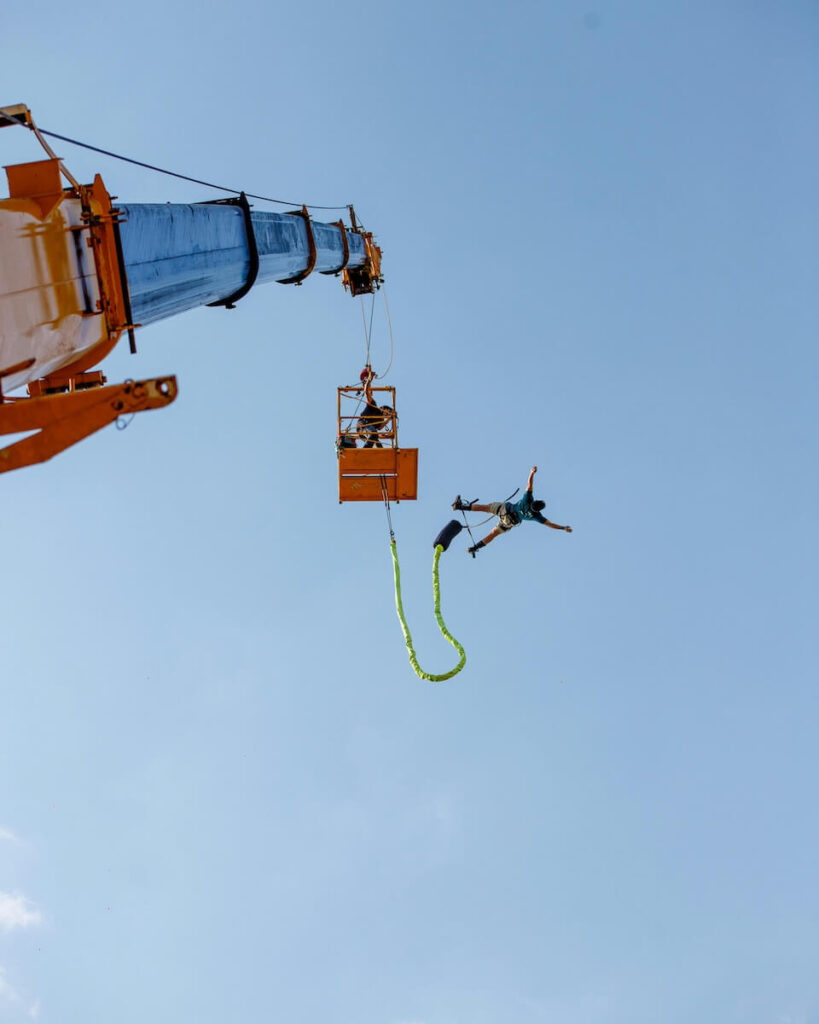
Where did I Go Bungee Jumping?
If I was going to jump off a platform and go into a total free-fall situation, I wanted to do it right! That’s why I chose the original home of the first commercial bungee jump: AJ Hackett!
Cause who wouldn’t want to take the leap in the adventure capital of the world: Queenstown, New Zealand?
To start, I had two options. I could go with a beautiful view from Kawarau Bridge Bungy or the higher Nevis Bungy.
Kawarau Bridge
If you are going on the bungee for bragging rights and beautiful photos, then Kawarau Bridge might be the option for you.
It comes with some nice jump variation such as the water touch where they can give the rope just enough slack for you to touch the crystal clear blue water below. I also read that there is a tandem option.
This wasn’t an option when I went and although I don’t recommend it because I think you should jump yourself, it might be the only way some people will participate in this activity. Something is better than nothing!
Don’t get me wrong, any bungee jump is going to be a scary experience, but if this is a major fear for you then this option might be the place to start.
It is beautiful, done by many tourists, off of a bridge, and is a 43m/141ft dive. All things considered, it could be a lot worse…
Nevis Bungy
This sounded incredible, but when I compared it to the higher and much scarier Nevis Bungy, I had to go for that one (yes, I am okay…I think).
This baby is the highest in New Zealand—134m/440ft and 8.5 seconds of pure terror and adrenaline.
Instead of diving off of a bridge, you are diving off a platform that is suspended in the air.
The whole thing including the bus drive took about 4 hours and I also purchased the add-on videos and photos because if I’m being truly honest with myself I’m just not sure I would do it again.
This isn’t anything against AJ Hackett, it was just terrifying!
My Personal Experience with Bungee Jumping
Before I get started, I would like to say that this is based off of my own personal experiences.
Your actual experience is going to largely depend on the company you go with, your personal fears, and how well you handle being in a total free-fall situation.
Bungy Jumping with AJ Hackett
As I said early, I ended up choosing the Nevis Bungy with AJ Hackett. I arrived at the shop/bus station about 30 minutes early.
This gave me plenty of time to walk around the store and accumulate a healthy amount of nerves.
The bus ride itself was filled with wonderful scenery before we stopped at the first stop at the Kawarau Bridge.
I had just enough time to grab a coffee and flick myself on the forehead for not just choosing the shorter one off the bridge.
Then it was back to the bus! Only about 6 of us chose to go on to the taller Nevis jump.
Once we were there, I bought some warmer socks and we went through the stereotypical safety briefing videos.
After signing some waivers it was time to get geared up and head to the platform.
Heading out to the Bungee Platform
Do you remember when I told you that you were going to be jumping from a platform suspended in the air?
Well, that means that you have to get to the platform suspended in the air. Not that it was scary or anything. It was a little weird standing on a plate that was wheeled out in the middle of a canyon.
We then were finally to the middle main platform. There was an area where we could stand and hang out when we weren’t jumping.
I was about 4th or 5th to go, which did absolutely nothing for my nerves.
What I felt when I Actually Jumped
Finally, it was my turn to take the leap. I sat in this reclined chair while 3 employees surrounded me.
They hooked me up to all of these funky straps and ropes that I knew nothing about.
It’s funny how I knew absolutely nothing about how they worked yet in the next 5 minutes, they would be responsible for my entire life.
After I was all hooked up, I waddled like a penguin to the edge looking to the horizon.
Then I looked down, which I admit now was my first mistake. Trying not to think about it, the staff member told me I was all clear and I jumped without hesitation.
For a brief moment, I was really proud of myself for jumping! Then…I fell.
My Experience with the Sensation of Free fall
Now if I am being honest I have never been a fan of the dropping rides at amusement parks and this felt just like one of those rides but 10x more intense.
My stomach literally felt like it was going to come through my throat.
I couldn’t even scream because it felt like I didn’t have any air I was falling so fast. 8.5 seconds seemed to last a lifetime.
But then, as with everything in life, it passed.
After I jumped
I was then hanging there by my feet glaring at the ground. Normally, you would pull a strap to swing you upright to enjoy the ride sitting upright.
I, however, could not find the strap and did the entire journey hanging by my feet. It felt a little like getting reeled in like a fish but there was no complaints from me!
After they reeled me in and got me all unhooked, we got back on the platform to return to the lodge and watch our videos and photos. Easy, right?!
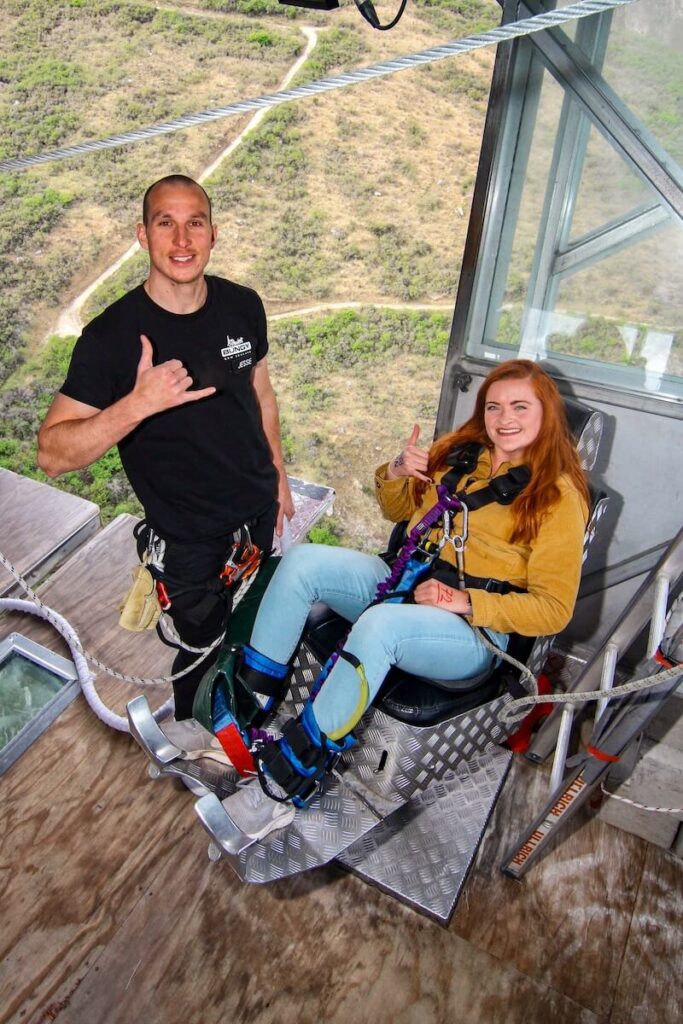
Tips and Recommendations for Bungee Jumping
Jump Right Away!
I cannot say this enough: jump right when they tell you to!
It is natural to hesitate when they tell you to jump because what they are telling you to do feels very unnatural and dangerous (even though you are strapped in and taken care of by professionals).
This hesitation only makes you overthink it more and makes it harder to jump when you eventually try again.
Don’t think about what you are about to do. Just do. Let go and just jump.
The more you hesitate, the more likely you won’t jump at all. And most companies don’t offer refunds for wimps (their words, not mine).
Feel the sensation beforehand (and see if you even like it)
If you have access to an amusement park that drops you (think the Tower of Terror at Disneyland), that is very similar to the sensation.
Granted, this is more intense and you have less of an illusion of safety since you aren’t harnessed into a comfy seat upright.
You are flying head first with the only contact point being your feet.
However, it might help just to feel a taste of that sensation first.
For those of you who haven’t felt this, it feels like your stomach is moving upward and it is quite a strange feeling.
I personally don’t care for it but I know that some people enjoy the experience.
don’t eat a ton of food before
Previously, we talked about the feeling in your stomach that you get when you are free-falling.
I can’t imagine that it would coincide very well with a stomach full of food.
I ate something small for the nerves. This was completely fine, but I am glad that I didn’t have a full-fledged meal.
Purchase the photo and videos
If it is in your budget and especially if you don’t see yourself doing bungee again, I would recommend getting the video/photo package.
I know this is ridiculous, but I watched a ton of videos of people freaking out, hesitating, and then just kinda “falling” off.
So, before I went bungee jumping, I swore that wasn’t going to be me. When I was terrified up there, that promise really forced me to jump as hard as I could.
In all of my travel photos and videos, my bungee video is easily the number one thing that people want to see.
And most of the time, they will watch it several times just to believe it! Their face kinda looks like this… 🤨😳🫣😱🤯
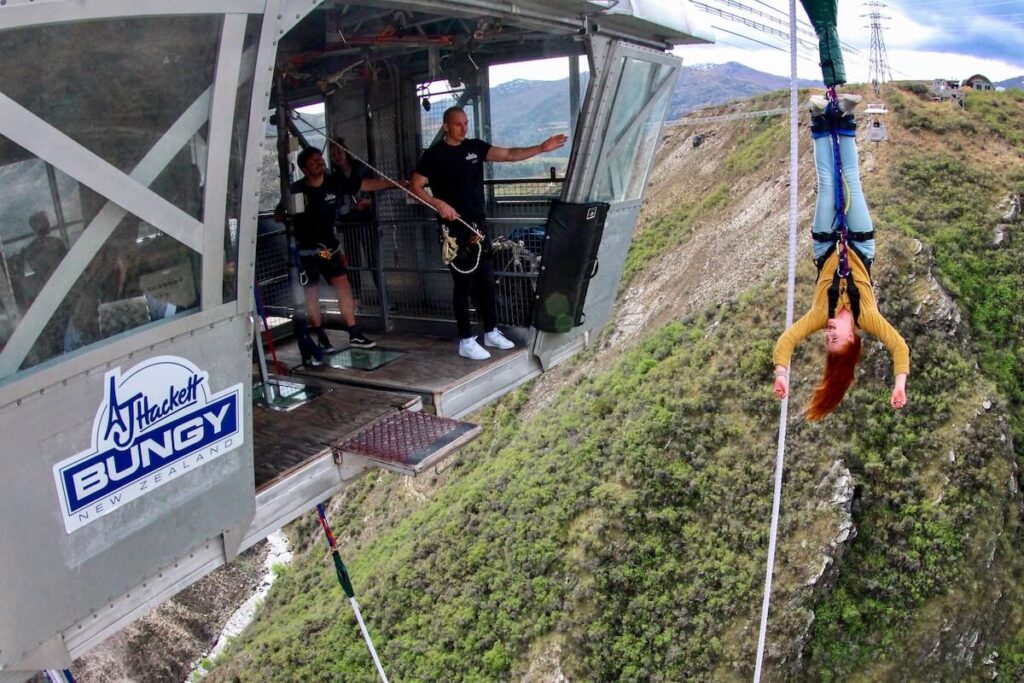
Bungee Jumping Vs Other Extreme Sports
Bungee Jumping vs. Skydiving
- Main Differences: Bungee jumping involves a short, intense free fall with a rebound, while skydiving offers a longer, controlled descent from an airplane.
- Fear Factor: Skydiving is often seen as scarier due to the height and longer freefall, whereas bungee jumping is an instant adrenaline rush. Personally, there was no contest. Bungee jumping was downright terrifying compared to skydiving. But, everyone is different.
- Which is Right for You: Choose bungee if you prefer a quick, vertical drop, and skydiving if you want the thrill of flying.
Learn More About Skydiving
I have also skydived multiple times! Read more about it!
Bungee Jumping vs. BASE Jumping
- Risk Comparison: BASE jumping is riskier because it involves jumping from lower altitudes (cliffs, buildings), giving less time to react. Bungee jumping is safer with controlled jumps and safety measures.
- Experience Required: BASE jumping requires significant training and experience, while bungee jumping is generally accessible to beginners.
Other Adrenaline Activities
- Ziplining: A high-speed descent on a cable, offering a different thrill with scenic views.
- Cliff Diving: Jumping from a high cliff into water, offering a mix of free fall and splash.
- Paragliding: Soaring through the air with a glider, providing a gentle, longer flight compared to the rapid drop of bungee jumping.
Note that I have done all of these except for base jumping. Hands down, bungee jumping was the scariest, most adrenaline pumping out of them all.
Conclusion: Take the Leap and Live the Thrill
Bungee jumping isn’t just a thrill. It’s one of those rare adventures that forces you to feel everything at once.
Fear, freedom, adrenaline, wonder… all wrapped into a single, glorious, gravity-defying moment.
And when you experience it as an adventure photographer? It hits completely differently.
As you plan your leap, choose a company and location that take safety seriously and offer views worth photographing.
Prepare your mind, prep your camera (or your photographer), and step onto that platform with a healthy dose of courage.
Because here’s the truth: the moment your toes leave the edge, life gets louder, brighter, and a whole lot more honest.
You see the world differently. You feel your body differently. And if you’re lucky, you’ll walk away with photos that capture exactly how alive you felt in that split second.
So… are you ready to jump? The world is full of bridges, cliffs, canyons, and wild places waiting to give you the drop of a lifetime.
Take the leap. Tell the story. And make the kind of memories (and photos) you’ll be bragging about forever. 🌍💥📸
Get In Touch
I would absolutely LOVE to see you checking this off of your adventure bucket list! If this guide helped and you are willing to share, feel free to reach out!
More Adventure Resources
Adventure Bucket List Resources
I am here to help your travel adventures go as smoothly as possible! That way you can check off that bucket list with minimal complications and spending!
SHOP – Shop the best adventure gear and essentials on my Amazon Storefront – handpicked by a full-time adventuring mermaid!
AIRFARE – There are a few I use, but Aviasales is normally my go-to for flights without any extra fees or markups.
ACCOMMODATION – My two favorites are Booking.Com for hotels and VRBO for rentals.
GUIDED TOURS – If you are looking for quick and easy tours, check out GetYourGuide and Viator.
MULTI-DAY TOURS – For more in-depth tours that span several days, TourHub has many great options with reputable travel companies. Use my code (ALEXANDRA1GURU) for up to 5% off your next bucket list adventure.
TRANSPORTATION – You can either rent a car yourself with Discover Cars or do a guided bus tours like Big Bus Tours.
SIM CARDS – Avoid expensive roaming charges with an eSim card with Airalo. Personally, I prefer wifi boxes, and recommend WiFi Candy (get 10% of with the code THEBUCKETLISTMERMAID).
TRAVELER’S INSURANCE – Check out VisitorsCoverage for affordable insurance plans. If you are a nomad or remote worker, I would check out SafetyWing.
SEE MORE – Adventure Resources | Photography Resources

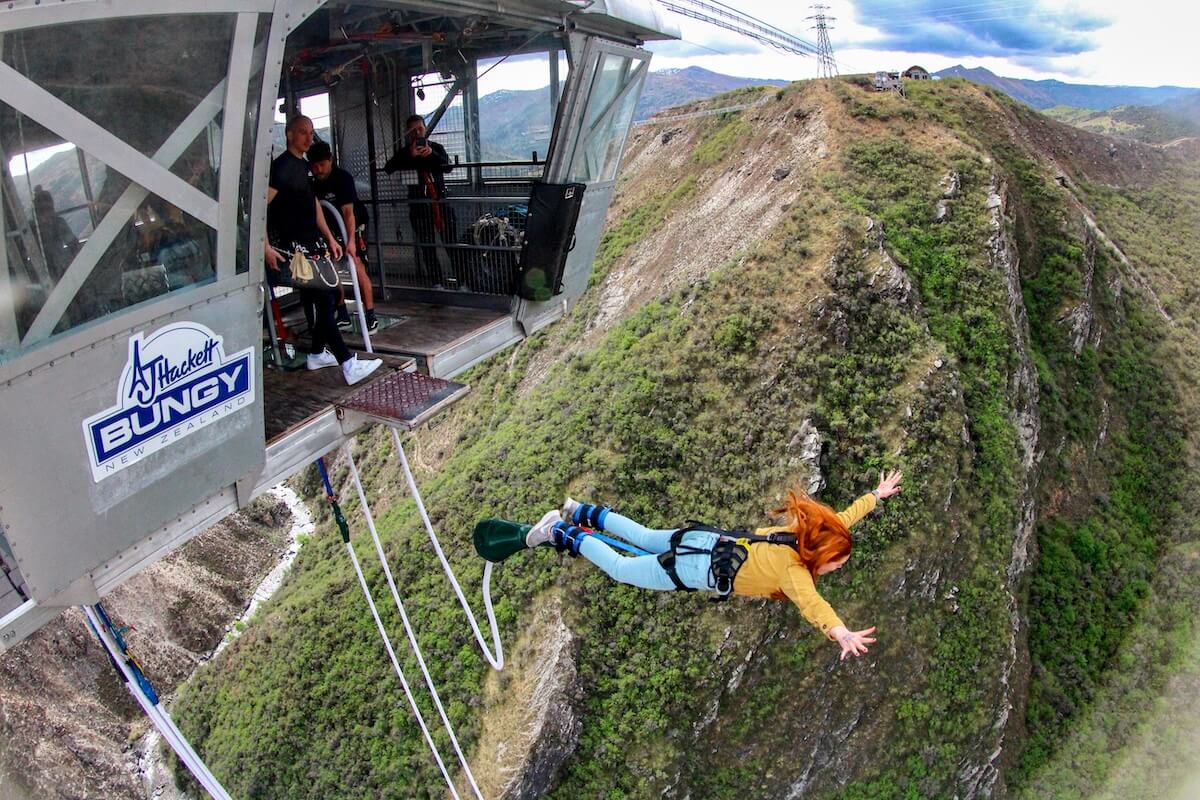
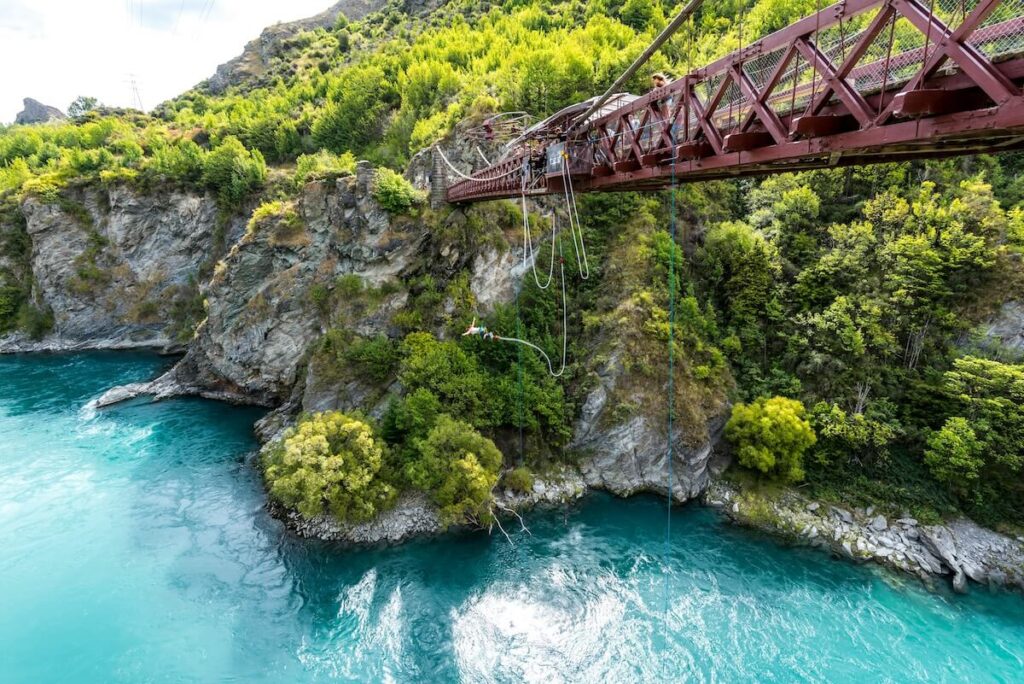
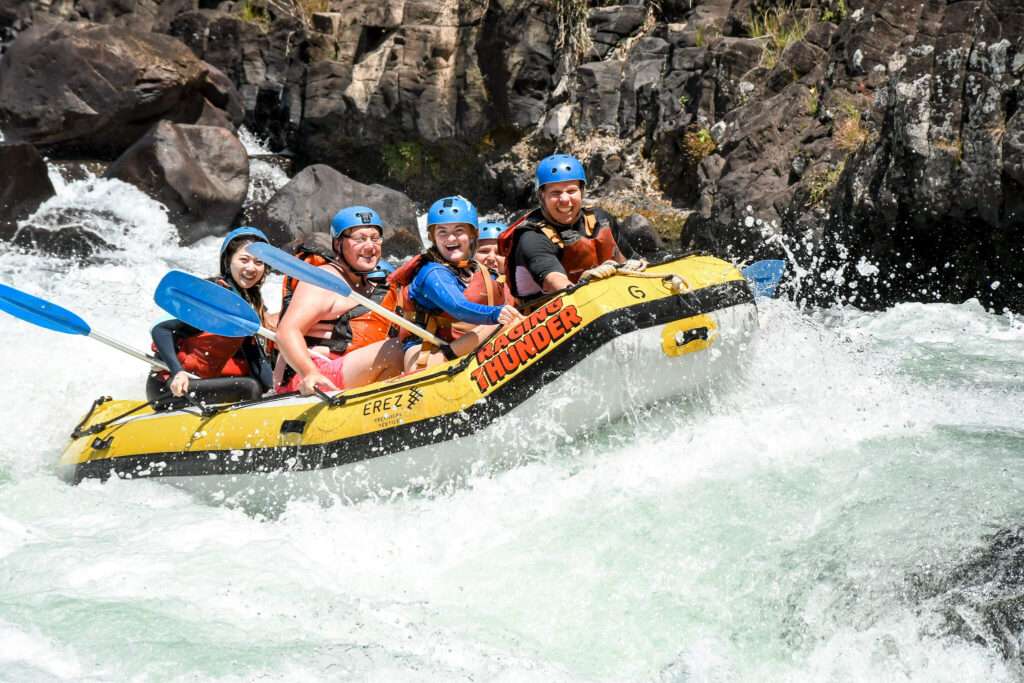
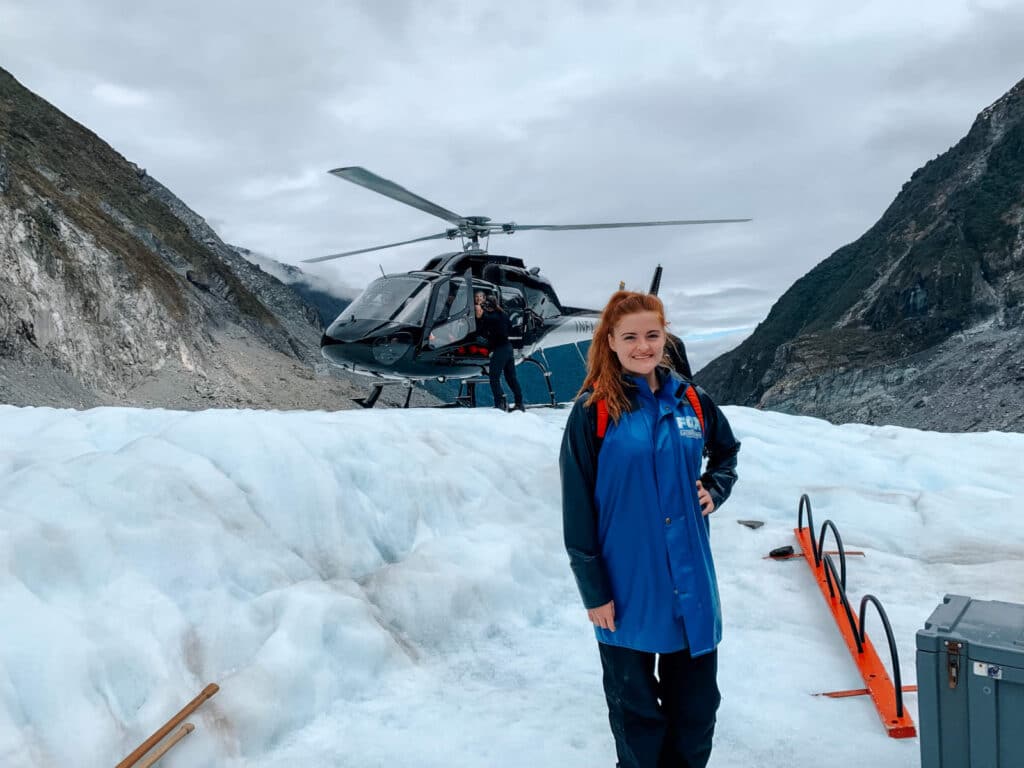
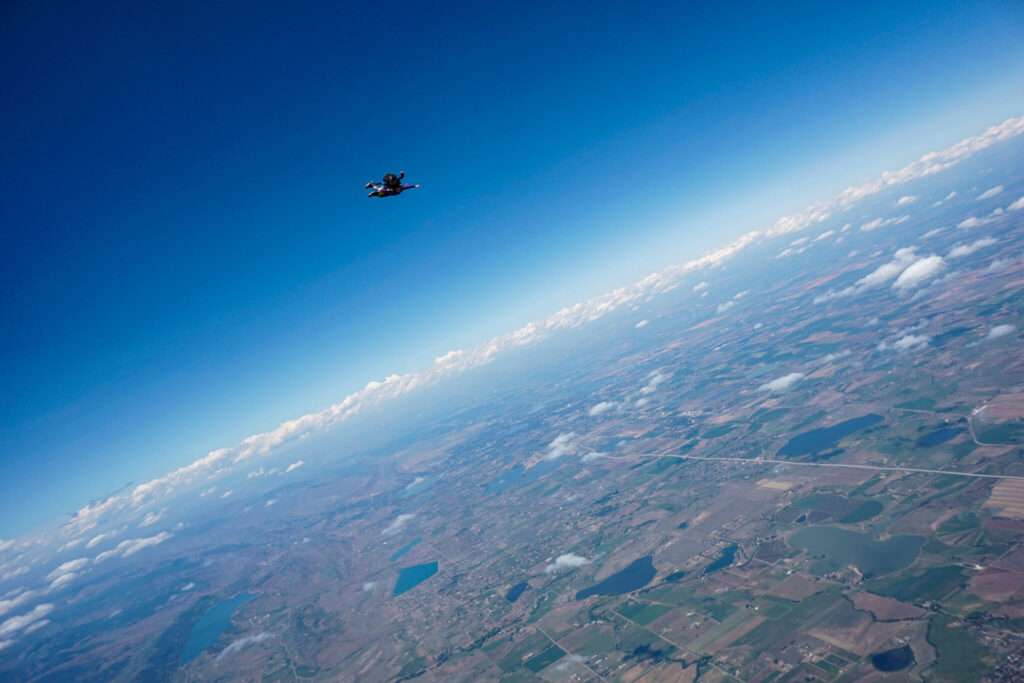
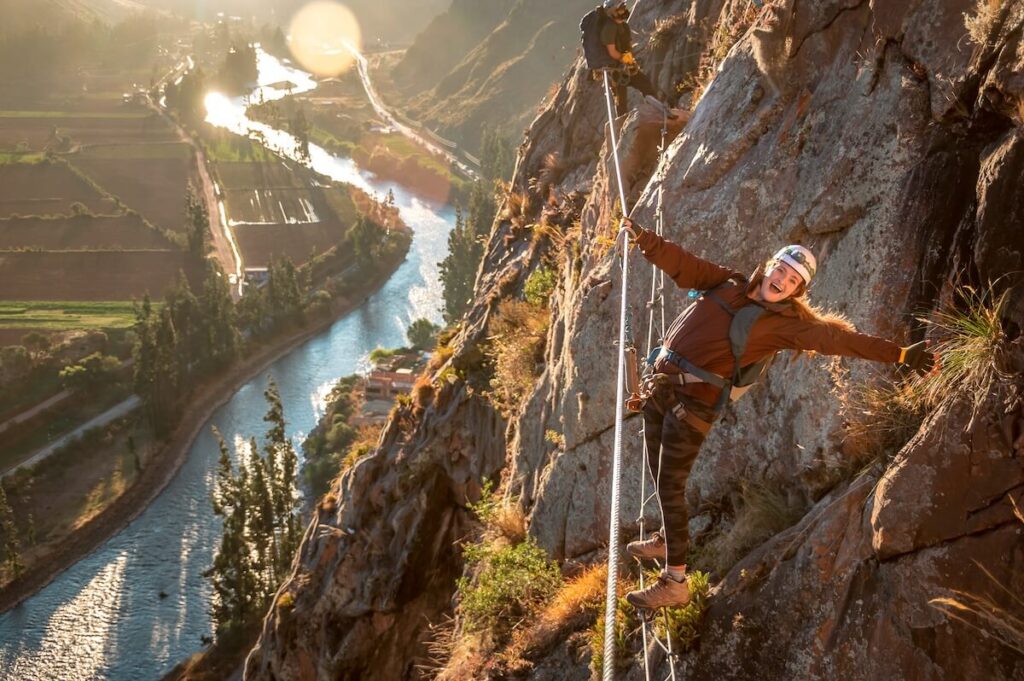
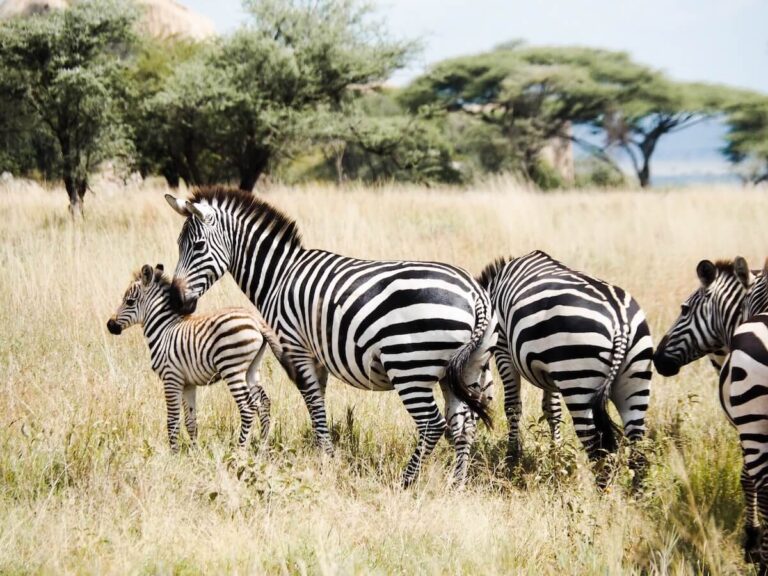
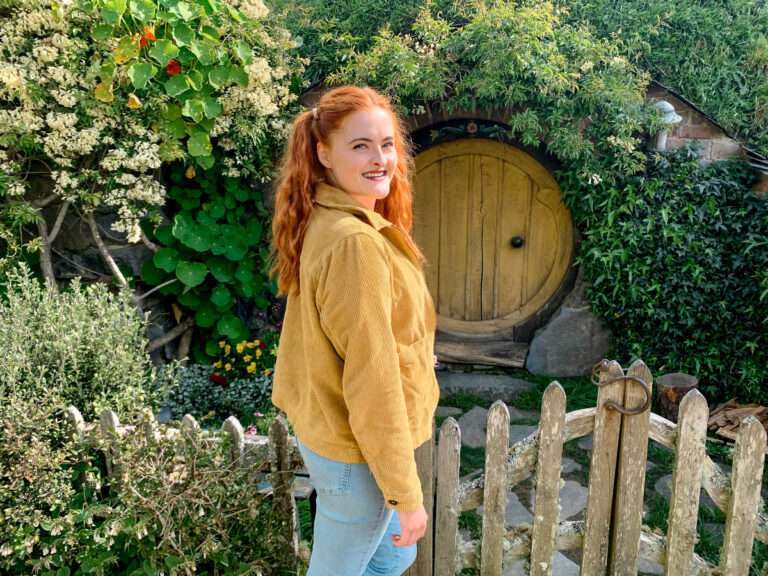



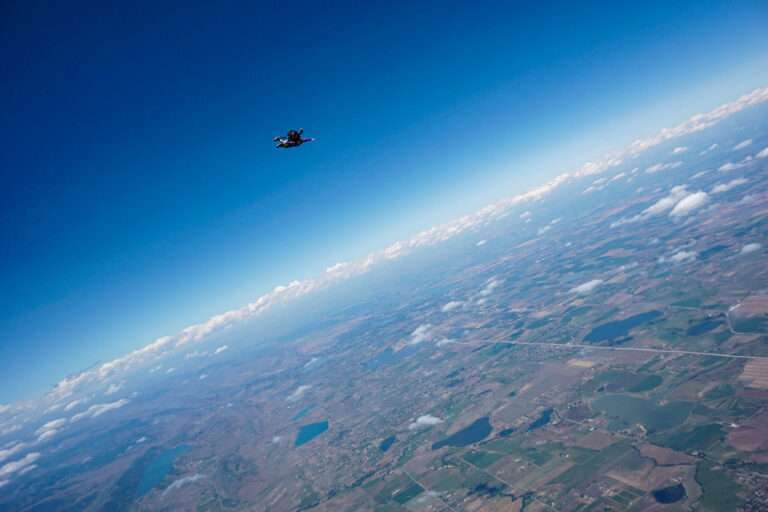
Bungee jumping is a heart-pounding adventure that taps into our need for thrill, but mental preparation and trusting professionals are essential for a safe and unforgettable experience.
Absolutely! Very well said! Have you ever been bungee jumping?
Your post is thrilling and super engaging! Just a small tweak—smoother transition from history to your experience would make it flow even better. Love how you mix facts with personal excitement!
Thank you so much for your kind words, tips, and insights! 🙂 Have you ever taken the leap?
This is such a thrilling and well-written post! I love how you blend history, personal experience, and practical advice, making it both informative and engaging. Your honest take on the fear and adrenaline rush of bungee jumping adds a real, relatable touch—perfect for anyone considering taking the leap!
Great post! Loved your take on bungee jumping—it really captures the thrill. Last time we talked, I mentioned our Rara Lake Trek in Nepal. If you’re looking for your next adventure, come to Rara Lake Trek and explore this hidden gem.